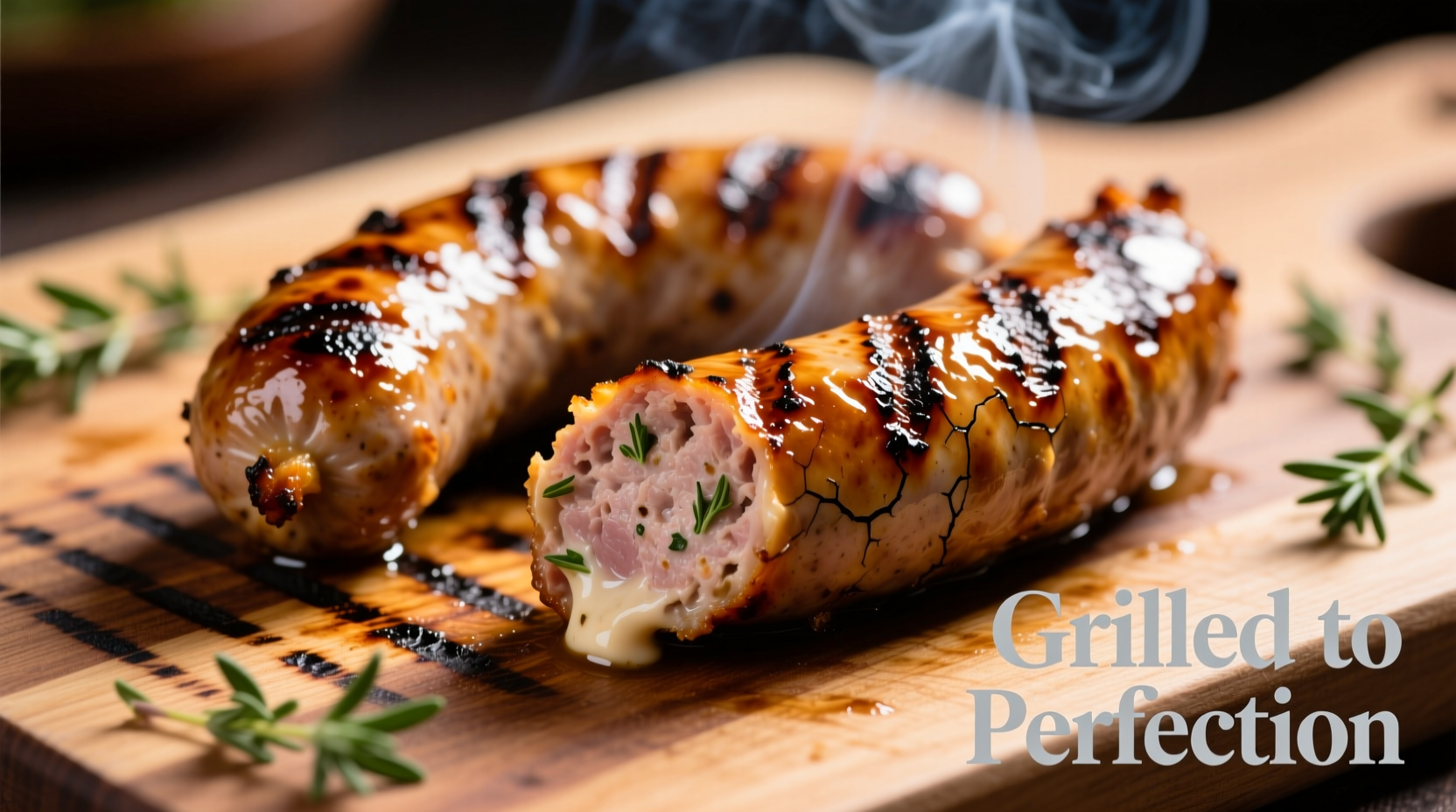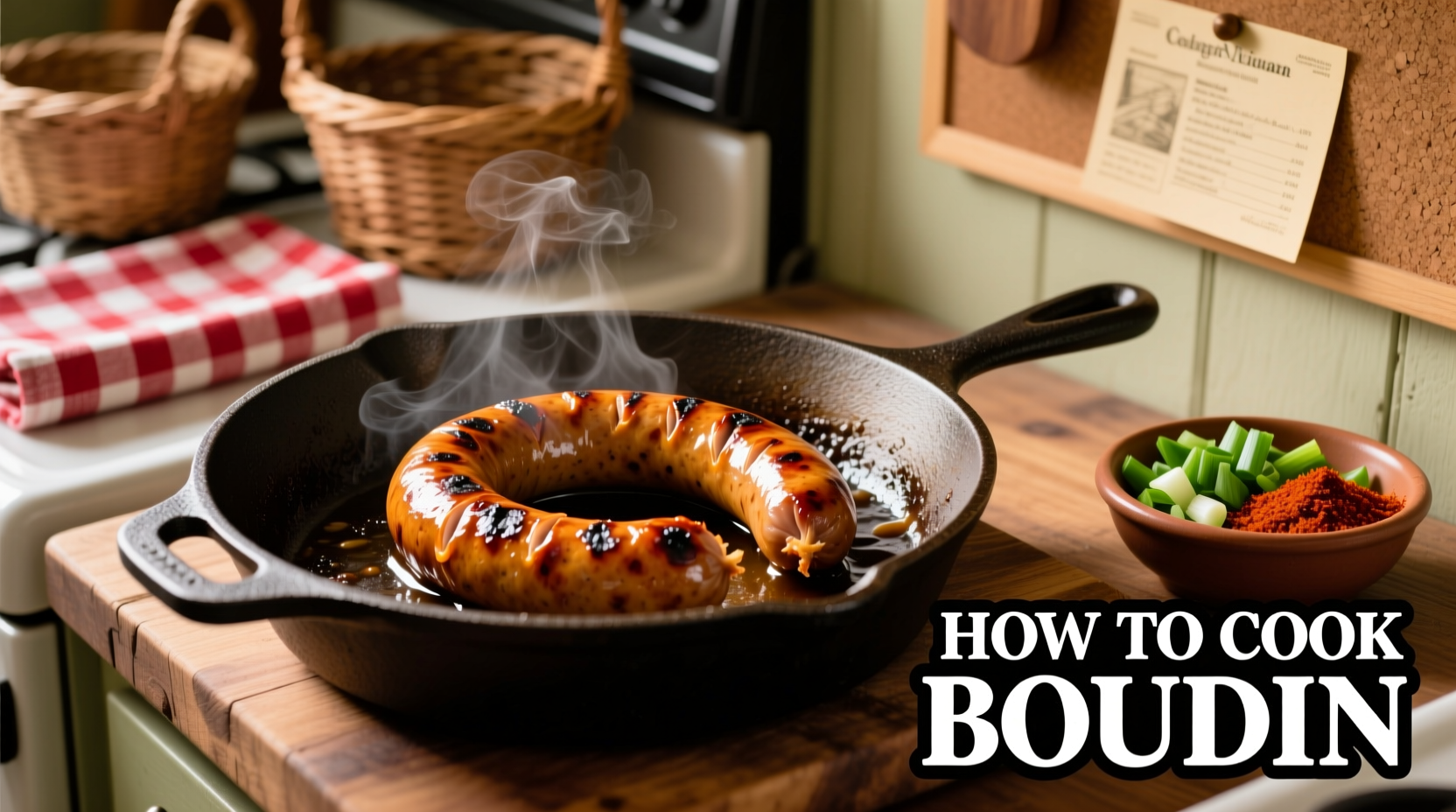Mastering Boudin: From Traditional Boiling to Modern Air Frying
Boudin, Louisiana's beloved sausage filled with pork, rice, onions, peppers, and spices, requires specific cooking techniques to achieve that perfect balance of crispy casing and tender interior. Whether you're working with store-bought links or homemade creations, understanding the proper cooking methods ensures you'll enjoy authentic Cajun flavors without common pitfalls like bursting casings or dry fillings.
Essential Boudin Cooking Methods Compared
| Cooking Method | Time Required | Temperature | Texture Result | Best For |
|---|---|---|---|---|
| Boiling | 10-15 minutes | Simmering water | Soft casing, moist filling | Traditional preparation, first-time cooks |
| Grilling | 12-18 minutes | Medium heat (350°F) | Crispy casing, smoky flavor | Outdoor gatherings, authentic Cajun experience |
| Baking | 20-25 minutes | 375°F | Evenly browned, slightly crisp | Indoor cooking, multiple servings |
| Air Frying | 8-12 minutes | 360°F | Extra crispy, minimal oil | Quick meals, health-conscious preparation |
| Pan-Frying | 10-15 minutes | Medium heat | Crispy bottom, golden brown | Small batches, immediate serving |
Understanding Boudin's Culinary Journey
Boudin's evolution from French boudin blanc to Louisiana's signature dish reveals why proper cooking technique matters. Originally a French peasant food using pork scraps and rice as filler, Cajun settlers adapted the recipe after their expulsion from Acadia in the 18th century. The addition of the "holy trinity" (onions, celery, bell peppers) and local spices created the distinctive flavor profile we know today. According to the Southern Foodways Alliance, traditional boudin preparation was perfected through generations of Louisiana cooks who understood that gentle cooking preserves the delicate rice filling while developing flavor in the casing.
Preparation Essentials Before Cooking
Before you start cooking, gather these essentials:
- High-quality boudin links (fresh, not frozen if possible)
- Instant-read thermometer (critical for food safety)
- Cooking oil or spray (for grilling, baking, air frying)
- Parchment paper (for baking)
- Tongs or spatula for turning
- Aluminum foil (for resting)
Pro tip: If using frozen boudin, thaw completely in the refrigerator overnight. Never cook boudin directly from frozen as this leads to uneven cooking and potential food safety issues. The USDA Food Safety and Inspection Service recommends maintaining proper temperature control when handling pre-cooked sausages to prevent bacterial growth.
Step-by-Step Cooking Methods
Traditional Boiling Method
Boiling remains the most authentic way to cook boudin, preserving the delicate filling while gently cooking the casing:
- Fill a large pot with enough water to cover the boudin links
- Bring to a gentle simmer (not a rolling boil)
- Carefully add boudin links using tongs
- Cook for 10-15 minutes until internal temperature reaches 160°F
- Remove with tongs and drain on paper towels
- Rest for 3-5 minutes before serving
Avoid piercing the casing during cooking, as this allows the flavorful filling to escape. The Southern University AgCenter notes that traditional Louisiana cooks often add a splash of apple cider vinegar to the boiling water to enhance flavor and prevent casing splitting.
Grilling for Authentic Flavor
Grilling adds a delightful smoky dimension while creating that coveted crispy exterior:
- Preheat grill to medium heat (350°F)
- Lightly oil the grates
- Place boudin links perpendicular to the grates
- Cook for 6-9 minutes per side, turning gently
- Check internal temperature reaches 160°F
- Remove and let rest 5 minutes before serving
For best results, place boudin on indirect heat after the initial sear to prevent bursting. Chef Paul Prudhomme's research on Cajun cooking techniques confirms that gradual heat application preserves the structural integrity of the sausage while developing complex flavors.

Baking for Consistent Results
Baking provides hands-off cooking with reliable results:
- Preheat oven to 375°F
- Line baking sheet with parchment paper
- Arrange boudin links without touching
- Bake for 20-25 minutes, turning once halfway
- Check internal temperature reaches 160°F
- Broil for 1-2 minutes for extra crispiness (optional)
- Rest 5 minutes before serving
Air Frying for Quick, Crispy Results
Air frying delivers restaurant-quality crispiness with minimal oil:
- Preheat air fryer to 360°F
- Lightly spray boudin with oil
- Place in basket without overcrowding
- Cook for 8-12 minutes, shaking basket halfway
- Check internal temperature reaches 160°F
- Rest 3-5 minutes before serving
How to Tell When Boudin Is Perfectly Cooked
Doneness indicators vary by cooking method but share these universal signs:
- Internal temperature reaches 160°F (most reliable indicator)
- Casing turns golden brown with slight crispness
- No raw meat color visible if casing is pierced
- Filling feels firm but not dry when gently pressed
Never rely solely on cooking time, as boudin sizes and fillings vary. An instant-read thermometer is essential for food safety. The Louisiana Department of Health emphasizes that proper cooking temperature prevents foodborne illness while preserving optimal texture.
Common Boudin Cooking Mistakes to Avoid
Even experienced cooks make these critical errors:
- High heat cooking: Causes casing to burst before filling heats through
- Piercing during cooking: Releases flavorful rice filling
- Skipping the rest period: Prevents juices from redistributing
- Overcrowding the pan: Creates steam instead of crispiness
- Using frozen boudin: Leads to uneven cooking and potential safety issues
Serving Suggestions for Authentic Experience
Traditional boudin pairs beautifully with:
- Cold beer or sweet iced tea
- Simple green salad with vinegar dressing
- Cold mustard for dipping
- Crusty French bread
- Crawfish étouffée for a complete Cajun meal
For presentation, slice boudin diagonally to showcase the colorful filling. Many Louisiana restaurants serve it with a side of pickled okra for that authentic regional touch.
Troubleshooting Your Boudin Results
Encountering issues? Here's how to fix common problems:
- Dry filling: You likely cooked at too high temperature. Next time, reduce heat and monitor internal temperature closely.
- Burst casing: This happens when heat is too intense or water boils too vigorously. Cook at gentler temperatures.
- Soggy texture: You may have overcrowded the cooking surface. Give boudin space for proper air circulation.
- Undercooked center: Check your thermometer calibration and ensure you're measuring from the center of the link.











 浙公网安备
33010002000092号
浙公网安备
33010002000092号 浙B2-20120091-4
浙B2-20120091-4